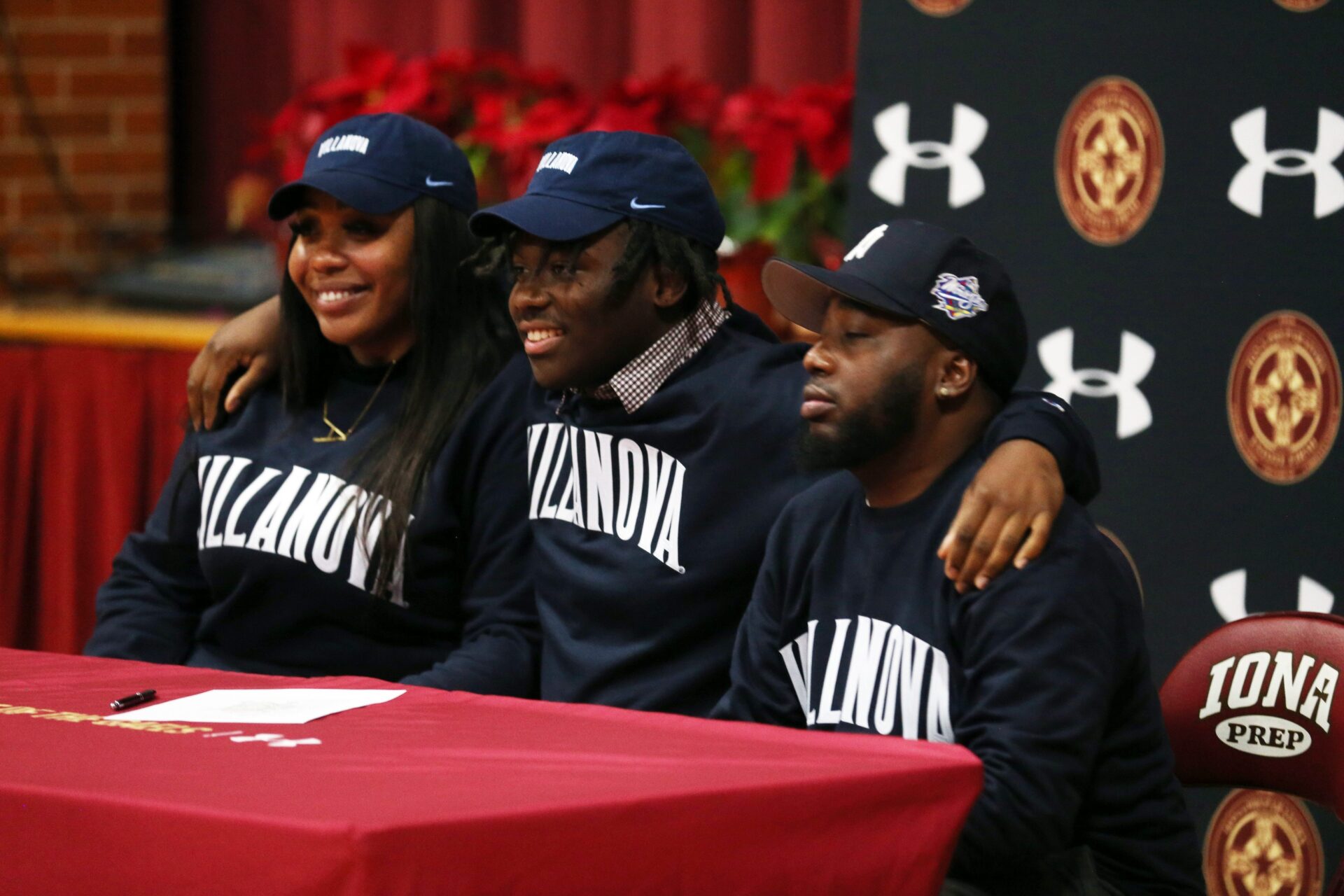A staple of a once-was era of college football, the NLI era of football is now behind us after a landmark NCAA Division I council. However, with some residual elements seeping into the new era of the sport, what exactly is NLI? It’s simple, really, but don’t confuse it with it’s similarly-named NIL, which means something completely different.
NIL stands for name, image, and likeness, while NLI is the National Letter of Intent, an agreement between a recruit and a school.

What Is an NLI?
You may be familiar with the image of a star high school recruit sitting in front of a camera surrounded by school caps before the athlete puts one on and declares they are attending said college. It was a commitment to a school in front of the nation, but the commitment wasn’t truly official until a document is signed.
A National Letter of Intent (NLI) was a legally binding agreement between a school and a prospective student-athlete that commits the player to a particular college. NLIs were used to make the commitment official between a school and a recruit and lock both parties into the deal.
MORE: No More National Letter of Intent (NLI) As Colossal College Football Changes Continue
Until an NLI was signed, the commitment by a recruit was only verbal and wasn’t an official declaration to a school. The NLI only became official when signed by the student-athlete. Until that moment, athletes could still be actively recruited, and a school could also back out of the agreement.
The NLI program was managed by the NCAA, while the Collegiate Commissioners Association oversaw the use of the program. The program started in 1964 and comprised 652 schools across Division I and Division II signed up across collegiate sports.
The National Letter of Intent organization stated, “All colleges and universities that participate in the NLI program agree to not recruit a prospective student-athlete once he or she signs an NLI with another college or university.”
That means once pen hit paper on the NLI contract, schools were “prohibited” from recruiting student-athletes.
AN NLI gave both the school and the recruit certainty that the relationship as the agreement comes with terms and conditions.
MORE: Simulate the College Football Season with CFN’s College Football Playoff Predictor
By signing the NLI, a recruit agreed to “attend the institution full-time for one academic year (two semesters or three quarters).” While the institution agreed to “provide athletics financial aid for one academic year (two semesters or three quarters).”
If either the recruit or the school broke the legally binding contract, they were harshly punished.
College Football Network has you covered with the latest news and analysis, rankings, transfer portal information, top 10 returning players, the full college football season schedules, and much more!

